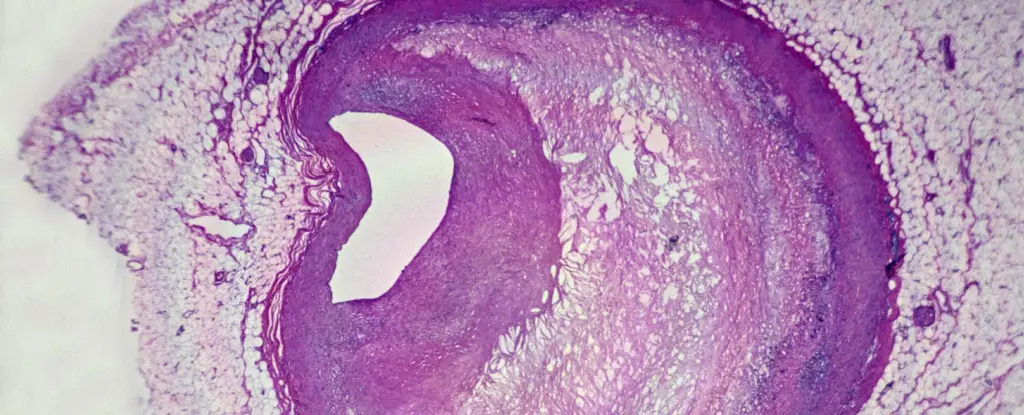In recent years, the proliferation of microplastics has emerged as a significant environmental and health concern, infiltrating ecosystems and human bodies alike. These minuscule plastic particles have been discovered in unexpected places, including human organs. A wake-up call has arrived from the scientific community, revealing a troubling correlation between microplastics and serious cardiovascular diseases such as heart attacks and strokes. While previous studies have mainly focused on the environmental impact of plastics, the implications for human health are now drawing urgent attention.
Microplastics in Arteries: What We Know So Far
A groundbreaking study led by Dr. Ross Clark at the University of New Mexico sheds light on the unsettling relationship between microplastics and arterial health. Presented at the American Heart Association’s annual meeting, the research reveals a marked increase in microplastic concentrations found within the plaque of diseased arteries compared to healthy ones. The alarming statistic reported indicates that the levels of microplastics in diseased arteries are drastically higher—up to 51 times more plastic in the plaque of individuals who have recently experienced strokes or other cardiovascular symptoms.
This information poses pressing questions for researchers and healthcare professionals. If microplastics are indeed accumulating in the vascular system, we must consider their potential role in the pathology of heart disease. Some might argue that correlation does not equal causation, but the evidence collected thus far is difficult to disregard.
A Mysterious Influence on Immune Function
The unsettling discovery does not stop at merely quantifying microplastics. Dr. Clark’s research delves into the biological implications, revealing alterations in gene expression in cells with high plastic content. Certain immune cells appear to deactivate genes responsible for regulating inflammation. This shift may have dire repercussions for cardiovascular health, as inflammation is a key player in the development and progression of arterial plaque—a precursor to heart attacks and strokes.
Moreover, stem cells believed to aid in maintaining arterial integrity seem to exhibit genetic changes in response to microplastics. This compounding evidence suggests a possible mechanism whereby microplastics contribute to the escalation of cardiovascular conditions. While this area of research is still in its infancy, the need for a more comprehensive understanding has never been more urgent.
Methodological Limitations: A Call for Further Investigation
Despite the findings’ initial impact, there are inherent limitations to the methodology employed in the study. The process of identifying and measuring microplastics involves heating arterial plaque samples to extreme temperatures, which can potentially yield misleading results. The breakdown of lipids—a component of arterial plaque—may mimic the properties of polyethylene, the most prevalent type of plastic found in consumer products. While efforts have been made to exclude the influence of lipids, the methodologies available for tracking microplastics are still developing and far from perfect.
Dr. Clark acknowledges this shortcoming and emphasizes the importance of ongoing research. It is crucial to recognize that as technological advancements continue to emerge, methods of identification and quantification of microplastics will evolve, ideally providing clearer insights into their implications for human health.
The Urgent Need for Holistic Research
The dialogue surrounding microplastics and health is gaining momentum, but experts underscore the urgent need for a multifaceted approach to this issue. Dr. Clark is advocating for additional research funding to explore how microplastics interact with immune cells in the vascular system. He envisions a broader research agenda that not only examines the carotid arteries but also includes other blood vessels and even animal studies to explore potential cause-and-effect relationships.
Simultaneously, public health advocacy and policy reform must align with scientific findings. A more profound commitment to tackling plastic pollution is essential—not merely for environmental health, but also for the safeguarding of human health. The potential ramifications for cardiovascular diseases necessitate that both individuals and lawmakers recognize the urgency of addressing plastic pollution not just as an environmental crisis but as a burgeoning public health hazard.
Our Health in Our Hands
As consumers, it is imperative to stay informed and proactive about our own exposure to microplastics. In a world increasingly inundated with plastic, adopting sustainable practices—such as reducing single-use plastic consumption and supporting eco-friendly products—can help mitigate the issue. The findings regarding microplastics paint a concerning picture, calling on individuals, researchers, and policymakers to act decisively and ethically in safeguarding not only the environment but also the health of present and future generations. The pathway to an informed and healthier future demands immediate action and significant societal change.


Leave a Reply